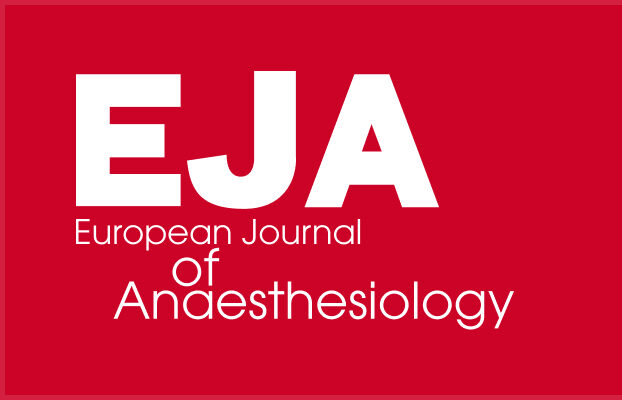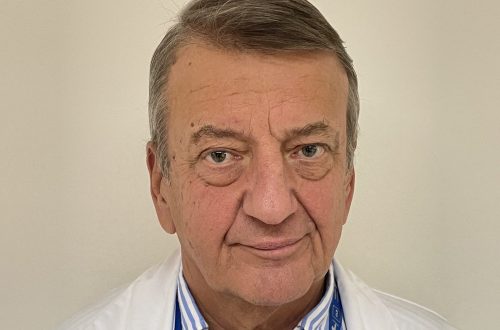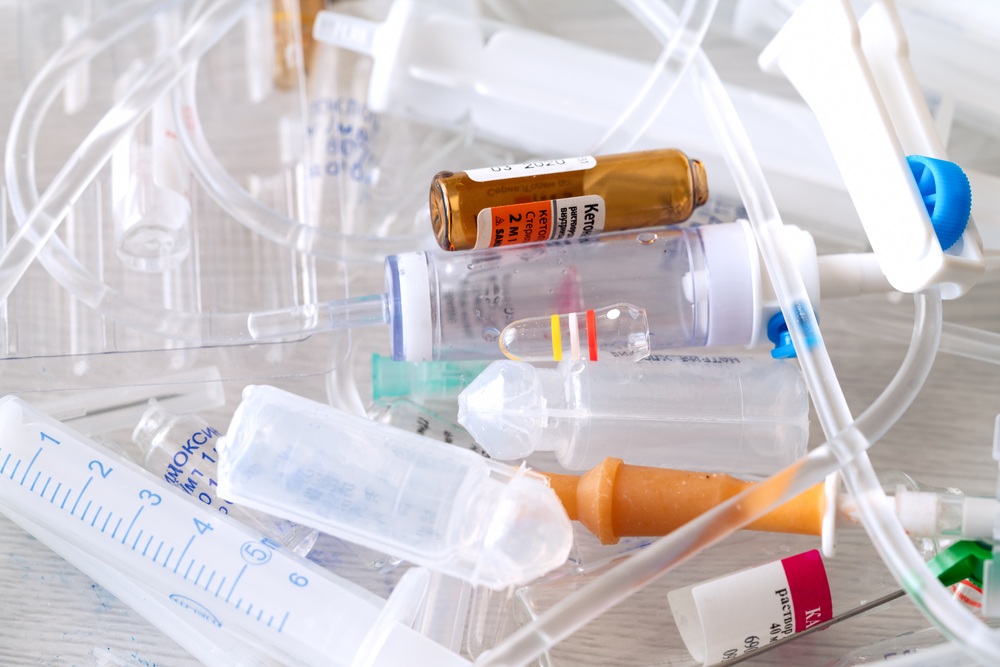Congress Newsletter 2023
Green Anaesthesia: balancing Patient Safety and eco-friendly practices
The research discussed in the article examines the differences between disposable and reusable items in preventing infections and contamination in hospitals and is based on various resources and studies made. It presents evidence that reusable equipment, such as laryngeal mask airways and anaesthetic medication platters, can have a lesser detrimental effect on the environment compared to their single-use counterparts. Reusable devices are also shown to offer cost reductions and significant financial savings.
This article explores the compatibility between patient safety and environmentally friendly practices in green anaesthesia, specifically focusing on single-use devices. It questions the prevailing use of disposable medical equipment and highlights the need for more scientific data supporting their safety. The article emphasises the importance of assessing the ecological impact of medical waste and considering long-term sustainability factors in equipment decisions. It also discusses proper disinfection practices for reusable equipment and provides guidelines for appropriate reuse. Overall, this article contributes valuable insights, recommendations, and potential solutions to promote sustainability in anaesthesia, making it relevant to the discussions at Euroanaesthesia 2023.
Over the years, using disposable medical equipment has become the norm. In Western nations, the majority of hospital systems now utilise single-use medical supplies. Even decades later, there is insufficient data from science in published research or any global guidelines to support the claim that disposable products are safer for individuals.
A primary reason for this is the directives of the precautionary principle and the possibility of transmitting infectious diseases via reusable healthcare equipment. In fields where there is little scientific data as regards public well-being and policies regarding the environment, this principle is used to guide decision-making. It proclaims, “In instances of severe or long-lasting risks to humans or the environment, scientific ambiguity is not appropriate to serve as a justification to delay preventive measures” (World Health Organization, 2020).
The field of anaesthesia has seen a significant rise in disposable equipment, including headgear, blood pressure cuffs, clothing, and ECG wires and cables. However, it is debatable whether using single-use medical equipment during anaesthesia is actually beneficial for the patient. In any case, given the current level of concern regarding climate change brought on by greenhouse gas emissions, it is necessary to assess the ecological effect of the waste generated by the medical sector.
In this article, we address two questions: Are there any differences between disposable and reusable items for preventing infections contracted in hospitals or contamination from surrogates? Which option is more affordable and eco-friendly when it comes to energy use, water wastage, waste production, and carbon footprint?
Medical equipment decisions, from an ecological sustainability standpoint, need to consider financial value and environmental and social effects. Regarding the fact that the full life cycle of a disposable item, from its manufacture to being discarded as waste, is frequently unidentified, its actual price is likely underestimated. The social implications of these items (no longer requiring sterilisation personnel for disposable equipment) are also not assessed. In the hospital, choosing between single-use and reusable items frequently appears to be determined by infection control as well as both direct and indirect expenses, along with the potential for immediate cost savings. This is not unexpected, given the complexity of the life cycle of a piece of equipment, from its production to its final phase, and the fact that authorities are unaware of these details before making a decision to buy such items. According to Ison and Miller (2000), decisions are occasionally made based on personal judgement, unreliable or insufficient details, and inaccurate or biased data.
A single reusable laryngeal mask airway, for instance, has been shown by Eckelman et al. (2012) to have a lesser detrimental effect on the environment than 40 single-use ones, through decreased carbon dioxide emissions, because PVC manufacture and polymerization are linked to high levels of carbon dioxide emissions (23% life cycle carbon dioxide emissions from single-use laryngeal mask airways). Reusable equipment also reduces carbon dioxide emissions from waste and transportation.
Reusable devices were shown to have a two-fold cost reduction when comparisons were made of disposable laryngoscopes, video-laryngoscopes, and laryngeal masks by McGain et al. (2017). Financial savings in Australia through the use of these items have been estimated to be around 2.3 million Australian dollars annually. Additionally, in a nation where disposable products are imported, the requirement for disinfecting or re-sterilizing reusable equipment may require job relocation.
McGain et al. (2010) operated on single-use plastic anaesthetic medication platters, which are twice as expensive and require over three times the amount of water. McPherson et al. (2019) used larger containers to reduce carbon dioxide emissions.
These findings evaluate the indisputable sustainability benefits of reusable healthcare equipment, including less resource wastage, water wastage, electricity usage, carbon dioxide emissions, and overall waste production. The existing research suggests that returning to reusable medical equipment will have favourable financial and ecological impacts. Nevertheless, before buying any equipment, life-cycle research must be done so that the choice between disposable and reusable products would not be solely based on cost reductions.
When using the precautionary principle, individuals would opt for disposable products rather than reusable ones because they might think that reusable products may spread new, undiagnosed infectious diseases. This strategy has previously been ineffective: when single-use items are less accurate or useful, they have serious adverse effects on the ecosystem, build significant expense, and may even put a patient’s life in danger.
According to the WHO, equipment that is non-critical and comes into contact with healthy skin, like blood pressure cuffs and stethoscopes, can be used again after a quick disinfection. Laryngoscope masks, blades, and other semi-critical items that come into contact with bodily fluids or mucous membranes need to be thoroughly disinfected before being used again (World Health Organization, 2016). The majority of anaesthesia-related equipment falls into one of these two groups, making it possible to reuse it after appropriate cleaning or sterilisation.
To maintain the sustainable development of anaesthetists’ work, certain changes should be made in the operating room:
- Reusable cloth scrubs and skullcaps should be worn, provided they have been thoroughly cleaned.
- When sterile clothing is required, use reusable sterile gowns.
- Use reusable devices for monitoring (blood pressure cuff, ECG wires, etc.)
- Reusable laryngoscope handles and blades should be used as long as they have been thoroughly sterilised or disinfected.
- Build stronger hand sanitation in the area where anaesthesia is administered, particularly after intubation.
- Improve the cleaning of the workspace in between patients, paying close attention to the anaesthesia device and the pressure-limiting valve in particular.
The COVID-19 pandemic has demonstrated that widespread use of single-use personal protective equipment results in an enormous amount of waste as well as scarcity when manufacturing facilities cannot keep up with the growing demand. According to Mc Gain et al. (2021), a system that uses locally produced, reusable medical personal protective equipment is not only advantageous environmentally but more durable.
The article suggests that decisions regarding medical equipment should take into account not only immediate cost savings but also long-term ecological and social impacts. It calls for life-cycle research to be conducted to inform the choice between disposable and reusable products, ensuring that sustainability considerations are taken into account.
Furthermore, the article emphasises the importance of proper disinfection and sterilisation practices to mitigate the risks associated with reusable medical equipment. It highlights the categorisation of equipment based on contact with healthy skin or bodily fluids, providing guidelines for appropriate reuse after cleaning or disinfection.
In the context of Euroanaesthesia 2023 and its focus on green anaesthesia, this article can contribute to the discussion on the compatibility between patient safety and environmentally friendly practices. It provides evidence-based insights, practical recommendations, and potential solutions to promote more sustainable practices in anaesthesia, specifically addressing the use of single-use devices.
References
- Eckelman, M., Mosher, M., Gonzalez, A., & Sherman, J. (2012). Comparative life cycle assessment of disposable and reusable laryngeal mask airways. Anesthesia & Analgesia, 114(5), 1067-1072. https://doi.org/10.1213/ANE.0b013e31824f6959
- Ison, E., & Miller, A. (2000). The use of LCA to introduce life-cycle thinking into decision-making for the purchase of medical devices in the NHS. Journal of Environmental Assessment Policy and Management, 2(04), 453-476. https://doi.org/10.1142/S1464333200000497
- McGain, F., McAlister, S., McGavin, A., & Story, D. (2010). The financial and environmental costs of reusable and single-use plastic anaesthetic drug trays. Anaesth Intensive Care, 38, 538–44. https://doi.org/10.1177/0310057X1003800320
- McGain, F., Muret, J., Lawson, C., & Sherman, J. D. (2021). Effects of the COVID-19 pandemic on environmental sustainability in anaesthesia. Response to Br J Anaesth 2021; 126: e118–e119. British Journal of Anaesthesia, 126(3), e119-e122. https://doi.org/10.1016/j.bja.2020.11.031
- McGain, F., Story, D., Lim, T., & McAlister, S. (2017). Financial and environmental costs of reusable and single-use anaesthetic equipment. BJA: British Journal of Anaesthesia, 118(6), 862-869. https://doi.org/10.1093/bja/aex098
- McPherson, B., Sharip, M., & Grimmond, T. (2019). The impact on life cycle carbon footprint of converting from disposable to reusable sharps containers in a large US hospital geographically distant from manufacturing and processing facilities. PeerJ, 7, e6204. https://doi.org/10.7717/peerj.6204
- World Health Organization. (2021). The precautionary principle: protecting public health, the environment and the future of our children. https://apps.who.int/iris/handle/10665/346211 (accessed November 30, 2020).
- World Health Organization, Pan American Health Organization (2016). Decontamination and reprocessing of medical devices for health-care facilities.
- http://www.who.int/infection-prevention/publications/decontamination/en/ (accessed November 30, 2020).










